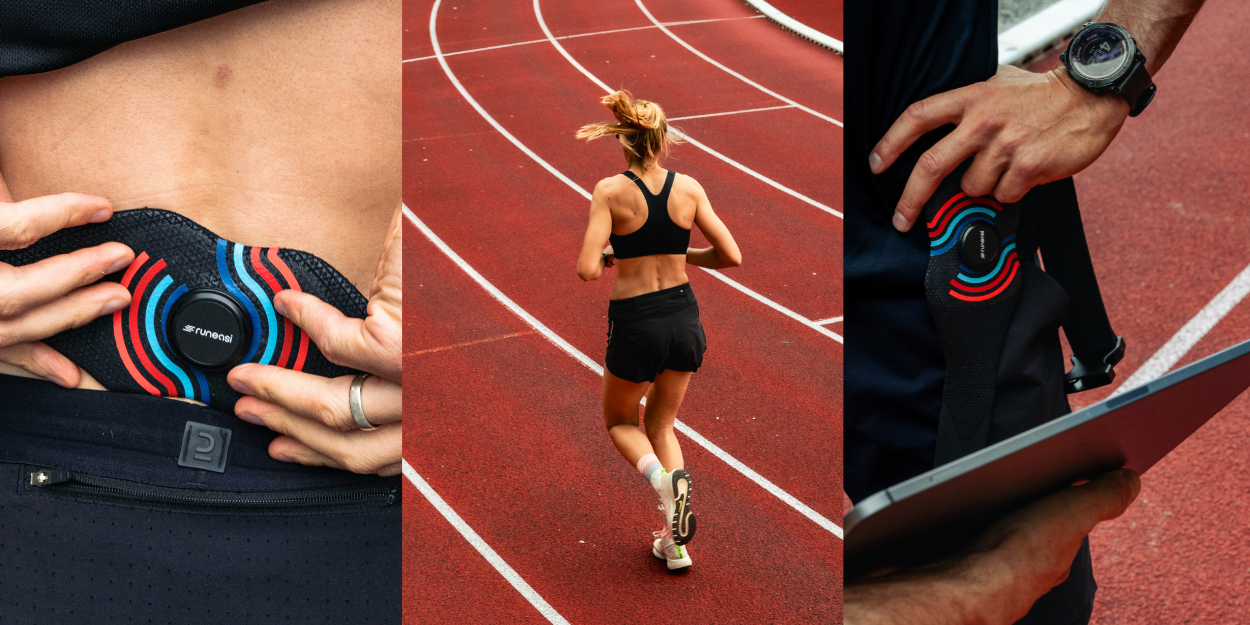Scientific-Validated Metrics
Impact magnitude
How much impact reaches your center of mass after contact with the ground? Higher impact values increases your total running load over the same time or distance.
Impact duration
How you absorb the impact through your legs after you made contact with the ground? A longer impact duration is linked to a softer and better coordinated landing.
Dynamic instability
How much energy is wasted that is not contributing to forward propulsion due to lower pelvic movement coordination and control. This is linked to running efficiency and injury risk due to extra strain and compensation of stabilizing muscles.
Contextual factors.
Cadence and ground contact time are parameters that can be used to optimize running technique.
Running analysis with Runeasi AI technology
The act of running impacts your muscles, joints and ligaments. The impact when the foot hits the ground is repetitive and ruthless. Unlike standard metrics like heart rate, distance, speed and time, Runeasi technology can capture these impacts. Overload, asymmetry and poor movement control causes setbacks, injuries and pain. Up to 79% of runners get injured each year. And because everyone moves differently, Runeasi employ AI technology to assess how your way of moving impacts your body. Runeasi can detect how specific exercises and running technique affect your body’s ability to cope with these impacts.
Stop guessing, start assessing
We quantify your running technique based on objective and evidence-based metrics after 10 years of research at KU Leuven. We obtain how much impact your body is subjected to and how fast you absorb it through your lower legs. We also measure your dynamic instability, which is linked to efficiency, fatigue, and injury risk. With this information, we can objectively provide individualized feedback, training, and tips that help you to move better.



